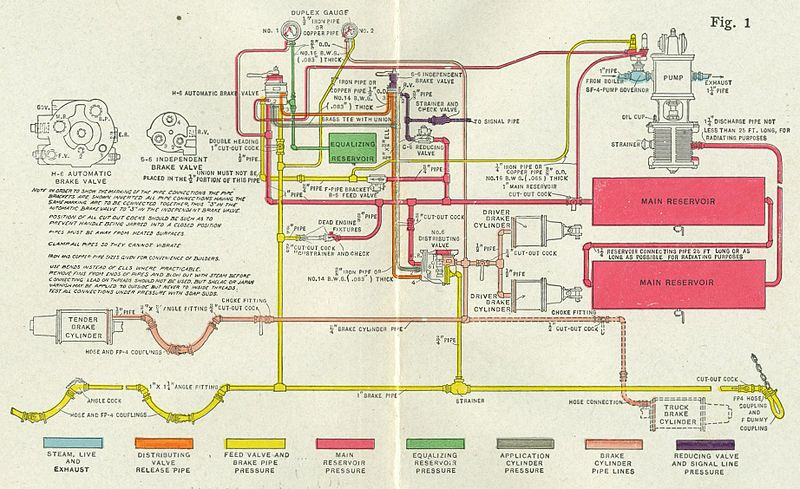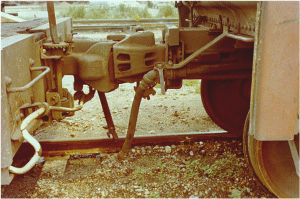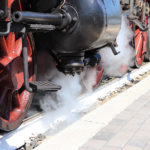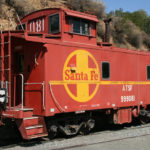The man who brought fail-safe brakes to railroads once had a major role in the 20th-century industry, but a combination of events and decisions have left only his braking system as a recognized legacy.
Part 1 established the need for a reliable, fail-safe braking system. This part looks at the system design in more detail, as well as Westinghouse’s expansion into this new thing called electricity.
The Westinghouse air-brake system had had three stages of operation: First, the system had to be pressurized before the brakes could be released; before this pressurization, the brakes were engaged. When operating pressure was reached, the brakes could be released if desired. Second, as the brakes were applied, the air pressure decreased; the valve allowed air to go back to the reservoir tank and the brakes could move to the applied position. The brakes could only be released after the air had escaped after braking; this was done by increasing the pressure. Of course, the final system had considerable additional pneumatic complexity (Figure 1).

We now would use the phrase “fail safe” to describe this design. Any failure in the supply line (Figure 2), would keep the brakes engaged or cause them to engage, and everything would have to be working properly to release the brakes. After some demonstrations and trials, his airbrake was accepted, standardized, and widely deployed (and eventually mandated by the U.S. Government). Its success was the basis for Westinghouse to set up the Westinghouse Airbrake Manufacturing Company in 1881, which was the core of his many industrial endeavors.

Westinghouse didn’t stop with brakes
Westinghouse was not content to just work on train-related innovations. He saw “electricity” as a huge opportunity and invested heavily to make it a widespread reality. He founded the Westinghouse Electric and Manufacturing Company in Pittsburgh in 1886, and was a major proponent of alternating current (AC) generation and distribution; this set up a fierce and personal rivalry with Thomas Edison, who advocated direct current (DC) power. By 1900, Westinghouse’s company employed 50,000 workers, and in 1906, it established a formal research and development division – among the first in the country (Edison, of course, was ahead of him on this).
Westinghouse even hired the eccentric electrical-engineering genius, Nicola Tesla, to work on AC issues such as the development of polyphase AC power, which is far more effective than single-phase AC for generation, distribution, and motor drive. Westinghouse Electric installed the nation’s first AC power system in 1891 in Telluride, Colorado, provided the highly visible, widely publicized generating systems for the 1893 World’s Fair in Chicago (over 250,000 bulbs), and provided generators for the hydroelectric power station at Niagara Falls (three 5,000-horsepower generators) to electrify Buffalo, NY, 20 miles away.
These systems not only showed that AC systems were practical, but they showed the public that electricity as power could be tamed and that AC was superior to DC (Edison proclaimed that AC would not work over large-scale deployments and that AC was more dangerous to users than DC – neither of which was true).
Edison’s Electric (renamed General Electric) and Westinghouse remained bitter rivals and each collected defensive patents, meaning that they were in constant litigation and so unable to introduce new products until disputes was settled. The two companies eventually tired of these battles and worked out a joint licensing board, which was a forerunner of today’s extensive cross-licensing agreements in the semiconductor industry.
Due a series of business missteps and issues, plus the stock market panic of 1907, Westinghouse Electric was unable to pay off loans and was placed in receivership in 1910. George Westinghouse was ousted from hands-on management although he retained significant ownership in the company and its affiliates. When he died in 1914 at the age of 67, his portfolio of affiliated companies (estimated at over one hundred) had over 15,000 patents, including 314 for his own inventions.
Part 3 will look at the possibilities and problems of using electrically controlled brakes.
EE World References
RCA
RCA & Color TV: A dominant company and standard, both now gone – Part 1
RCA & Color TV: A dominant company and standard, both now gone – Part 2
Locomotives
Electrified Locomotives, Tunnels, and the Pennsylvania Railroad: Astonishing engineering but a partially sad ending, Part 1: The challenge
Electrified Locomotives, Tunnels, and the Pennsylvania Railroad, Part 2: The tunnels
Electrified Locomotives, Tunnels, and the Pennsylvania Railroad, Part 3: The station
Catenary power
Electric locomotives and catenary power systems – Part 1: basic functions
Electric locomotives and catenary power systems – Part 2: power needs
Electric locomotives and catenary power systems – Part 3: power delivery
Electric locomotives and catenary power systems – Part 4: maintenance and corona
External References
- S. Patent 144006, “Improvement in steam and air brakes”
- The Traffic Accident Reconstruction Origin (TARO), “An Introduction to Train Brakes”
- Funding Universe, “Westinghouse Electric Corporation History”
- The Economist, “Westinghouse RIP”
- Engineering and Technology History Wiki, “Westinghouse Electric Corporation”
- Garbedian, H. Gordon, “George Westinghouse: Fabulous Inventor,” Dodd, Mead, 1943.
- The Railway Technical Website, “Electro-Pneumatic Brakes”
- net, “Braking Systems”
- Trains, “Electronically controlled pneumatic brakes study ‘inconclusive’ ”
- Trains, “The war over electric brakes”
- Statistica, “North American freight rail cars in service from 2009 to 2019, by car type”






